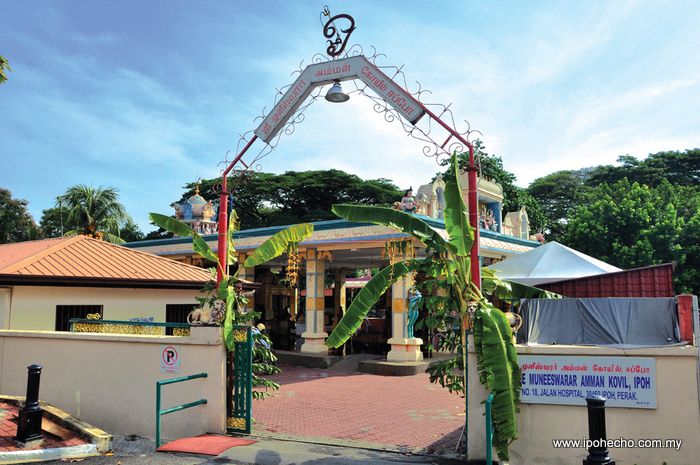

By Fathol Zaman Bukhari
I got a rude shock one Sunday evening when I received news that a Malay youth had entered a Hindu temple along Jalan Hospital and destroyed some statues. The statues, 13 in all, represented Hindu deities that devotees of the faith idolised. The perpetrator’s action amounted to the desecration of objects of worship of the Hindu community. The sanctity of the temple had thus been violated.
It took me awhile to take stock of things, as I had not, in my wildest dream, thought that this wanton and deliberate act could happen in my own backyard. It must be the work of a madman or someone of unsound mind, I assumed. Ipoh is and has been a peaceful town. An incident of this nature would definitely have a negative impact on people, especially coming at a time when religious insensitivity is becoming a norm due to a multitude of reasons. Growing religious intolerance and extremism top the list.




The person responsible was a 29-year old medical intern from Kampong Kepayang. He is the son of the former state assemblyman for Manjoi, Nadzri Ismail. He was trained in Egypt and had been an intern at the Ipoh General Hospital for barely two weeks. The action by the Police to commit him to the mental asylum in Tanjong Rambutan raised many eyebrows. Was it a cover-up or was it a case of someone who had genuinely gone bonkers? There is no way of telling as the truth may be hidden from public scrutiny for good.
A similar incident happened in Kerling, Selangor in August 1978. Following numerous attacks on Hindu temples in the peninsula the preceding months, the Indian community in Kerling decided to guard their temple. Early one morning five Malay men in a car arrived at the Kerling temple and proceeded to smash statues with iron rods. They were quickly surrounded by 10 Indian youths who were hiding in a nearby bush. A fight ensued and four of the intruders were killed while one was seriously wounded. Ironically, the wounded man was a medical student from Australia who was home on vacation. Luckily, the Jalan Hospital temple was unguarded. Had there been people in the temple the result would have been nasty.
Is this incident a harbinger of something sinister to come? Let’s hope not.
The ouster of Shah Pahlavi of Iran by Ayatollah Khomeini in 1979 had a profound impact on the way Islam is practised here in Malaysia. In fact it was a watershed, the beginning of the Islamisation process in Malaysia.
Social experts have considered this as the point of transcendence, a point of no return, so to speak. And I concur having witnessed the change that is slowly transforming the religious landscape of this country from secularism to sectarianism.
Religious intolerance is unacceptable in a multi-ethnic society like ours. But the way things are today I fear something untoward will happen. The acceptance of controversial televangelist Zakir Naik by the government to do its religious bidding is a case in point. Terengganu has upped the ante by promising Zakir islands in Tasik Kenyir to train “mini Zakir Naiks”. Plans are afoot to spread Zakir’s words of wisdom via satellite in the national language. A training programme is already underway to produce six Malaysian protégés to be part of Zakir’s evangelical network.
I find it strange that someone who has been banned by a number of countries for preaching hate, instigating communal tensions and radicalising the Muslim community is being welcomed with open arms by our leaders. Such contradiction is unimaginable.


